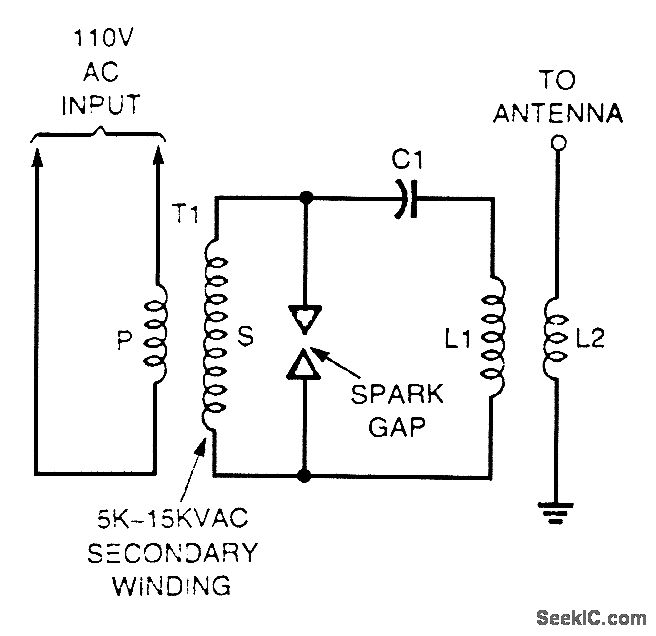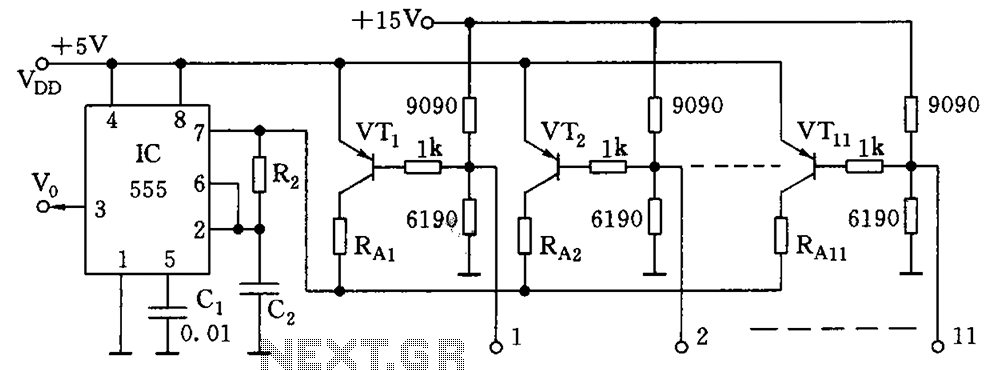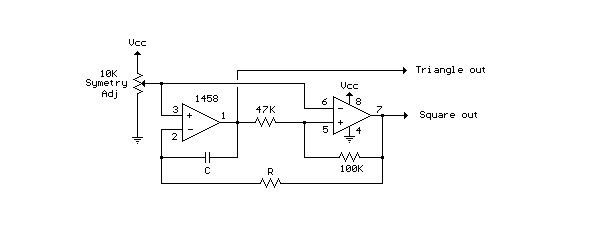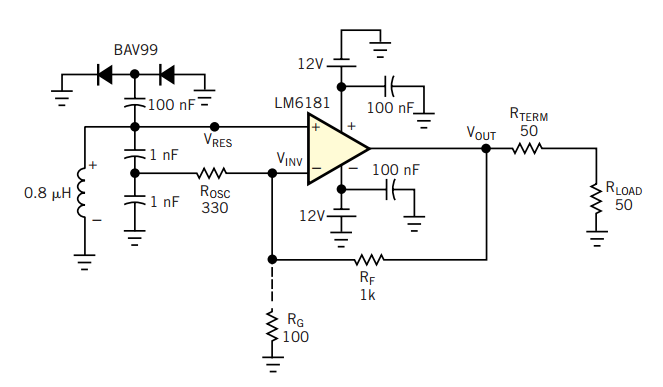
Tube-type crystal oscillator
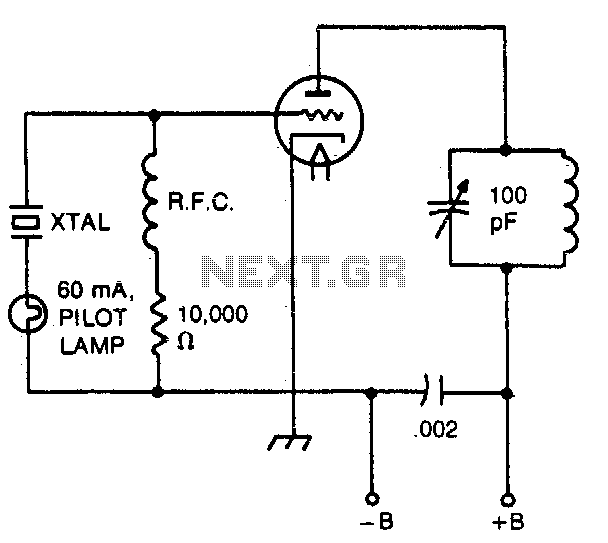
The pilot lamp limits current to prevent damage to the crystal. A very useful circuit.
The circuit incorporates a pilot lamp designed to limit the current flowing to a crystal component, thereby safeguarding it from potential damage due to excessive current. The pilot lamp functions as a visual indicator and a current-limiting device. Typically, this is achieved by placing the pilot lamp in series with the crystal, which ensures that the current passing through the crystal does not exceed its rated specifications.
In a typical application, the pilot lamp is selected based on its voltage rating and current capacity, which should match the requirements of the circuit. When the circuit is powered, the pilot lamp illuminates, indicating that the circuit is operational while simultaneously limiting the current to a safe level for the crystal. This feature is particularly beneficial in preventing thermal runaway conditions that could lead to failure of the crystal.
Additionally, the circuit may include resistive or capacitive elements to further stabilize the current flow and enhance the overall functionality. The use of a pilot lamp not only serves a protective role but also provides a straightforward diagnostic tool for users to assess the operational status of the circuit. Overall, this design exemplifies a practical solution for integrating protective measures within electronic circuits, ensuring reliable and safe operation of sensitive components.The pilot lamp limits current to prevent damage to the crystal A very useful circuit.
The circuit incorporates a pilot lamp designed to limit the current flowing to a crystal component, thereby safeguarding it from potential damage due to excessive current. The pilot lamp functions as a visual indicator and a current-limiting device. Typically, this is achieved by placing the pilot lamp in series with the crystal, which ensures that the current passing through the crystal does not exceed its rated specifications.
In a typical application, the pilot lamp is selected based on its voltage rating and current capacity, which should match the requirements of the circuit. When the circuit is powered, the pilot lamp illuminates, indicating that the circuit is operational while simultaneously limiting the current to a safe level for the crystal. This feature is particularly beneficial in preventing thermal runaway conditions that could lead to failure of the crystal.
Additionally, the circuit may include resistive or capacitive elements to further stabilize the current flow and enhance the overall functionality. The use of a pilot lamp not only serves a protective role but also provides a straightforward diagnostic tool for users to assess the operational status of the circuit. Overall, this design exemplifies a practical solution for integrating protective measures within electronic circuits, ensuring reliable and safe operation of sensitive components.The pilot lamp limits current to prevent damage to the crystal A very useful circuit.
